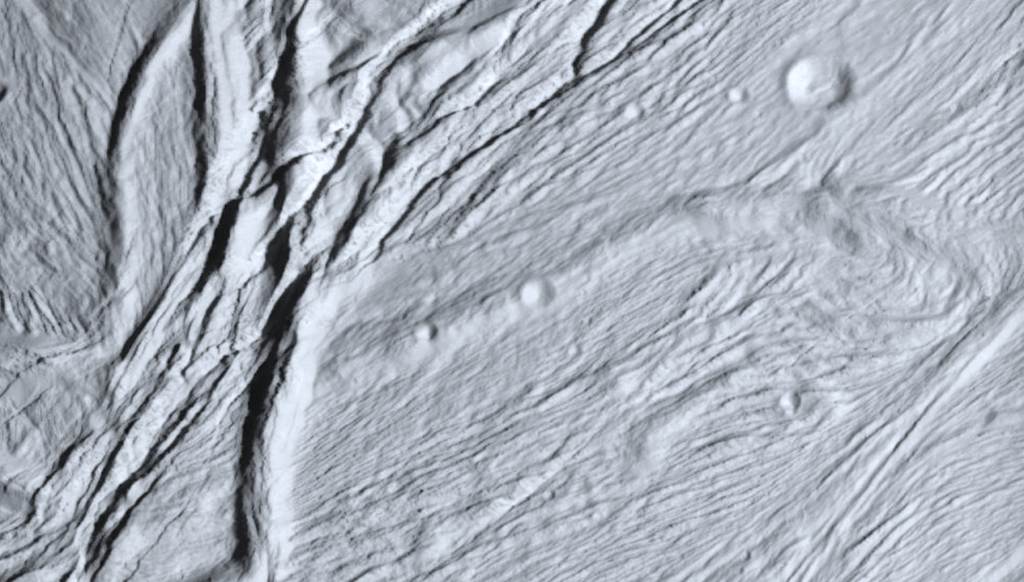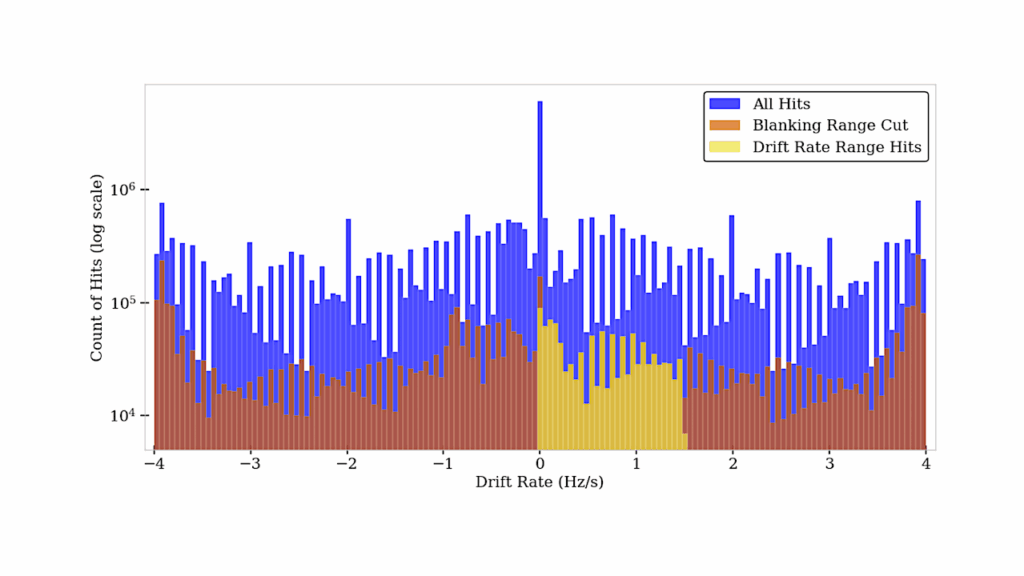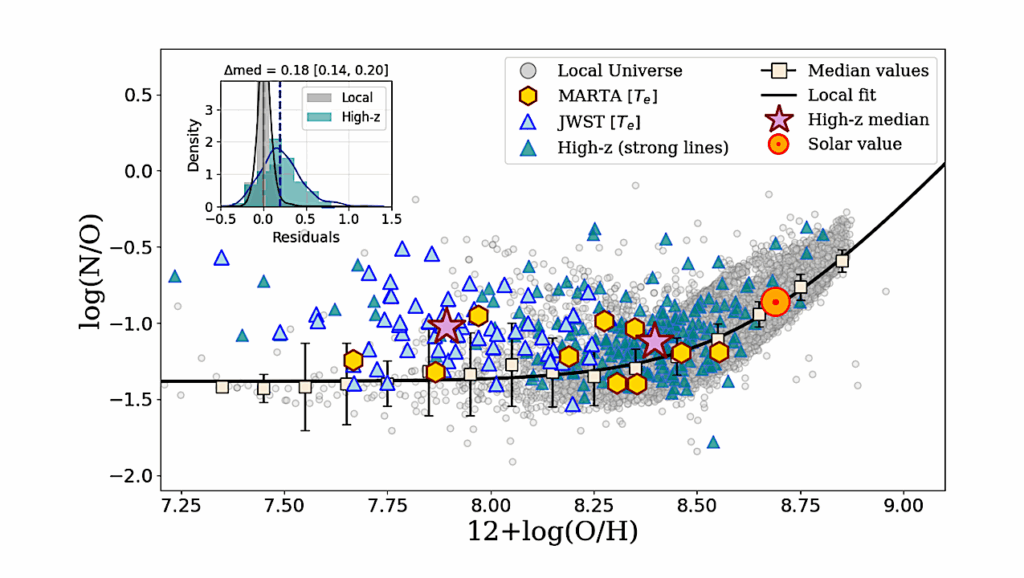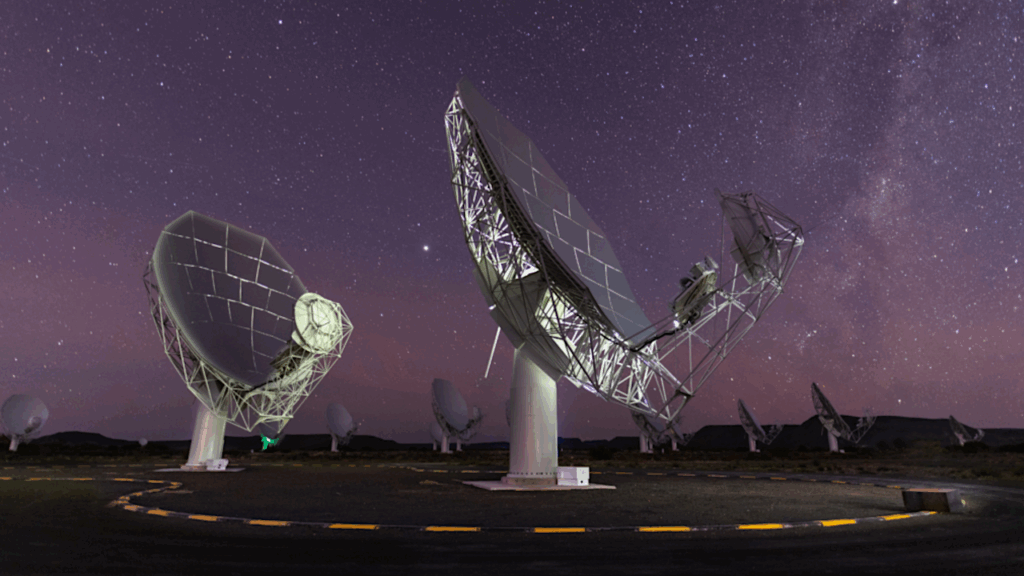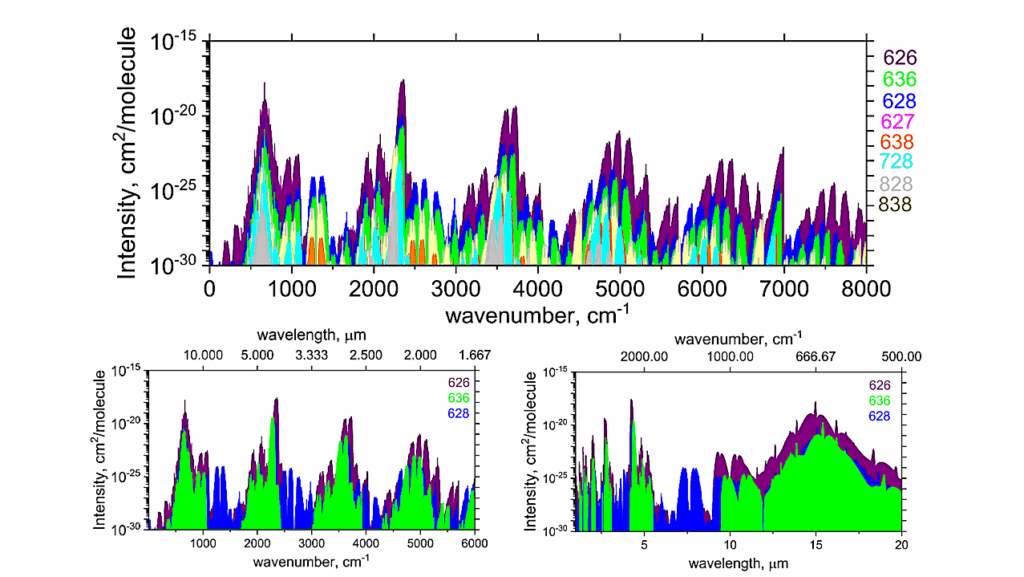Europa’s H2O2: Temperature Insensitivity and a Correlation with CO2
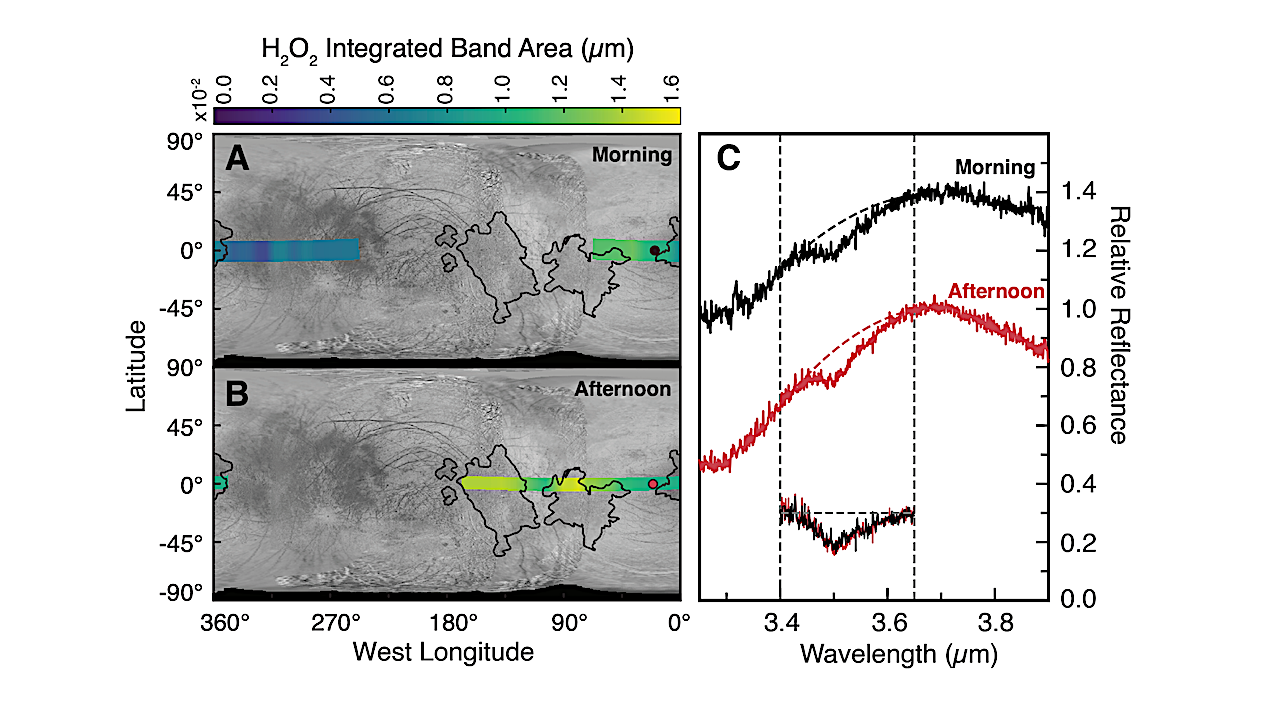
H2O2 is part of Europa’s water-ice radiolytic cycle and a potential source of oxidants to Europa’s subsurface ocean. However, factors controlling the concentration of this critical surface species remain unclear.
Though laboratory experiments suggest that Europa’s H2O2 should be concentrated in the coldest, most ice-rich regions toward the poles, Keck adaptive optics observations have shown the strongest H2O2 signatures in comparatively warm, salt-bearing terrain at low latitudes.
As a result, it was suggested that the local non-ice composition of these terrains — particularly hypothesized enrichments of CO2 — may be a more dominant control on H2O2 than temperature or water-ice abundance.
Here, we use observations of Europa from the NASA Infrared Telescope Facility, Keck Observatory, and JWST to disentangle the potential effects of temperature and composition. In order to isolate the effect of temperature on Europa’s H2O2, we use the ground-based observations to assess its response to temperature changes over timescales associated with Europa’s daily eclipse and diurnal cycle.
We use JWST Cycle 1 data to look for any geographic correlation between Europa’s H2O2 and CO2. Both changes in Europa’s 3.5-μm H2O2 absorption band from pre to post eclipse and across a local day suggest minimal effects of the local temperature on these timescales.
In contrast, the JWST observations show a strong positive correlation between Europa’s H2O2 and CO2 bands, supporting the previously suggested possibility that the presence of CO2 in the ice may enhance H2O2 concentrations via electron-scavenging.
Peiyu Wu, Samantha K. Trumbo, Michael E. Brown, Katherine de Kleer
Comments: 17 pages, 4 figures, Accepted to the Planetary Science Journal
Subjects: Earth and Planetary Astrophysics (astro-ph.EP)
Cite as: arXiv:2408.14639 [astro-ph.EP] (or arXiv:2408.14639v1 [astro-ph.EP] for this version)
https://doi.org/10.48550/arXiv.2408.14639
Focus to learn more
Submission history
From: Peiyu Wu
[v1] Mon, 26 Aug 2024 21:06:19 UTC (37,497 KB)
https://arxiv.org/abs/2408.14639
Astrobiology, Astrochemistry,


